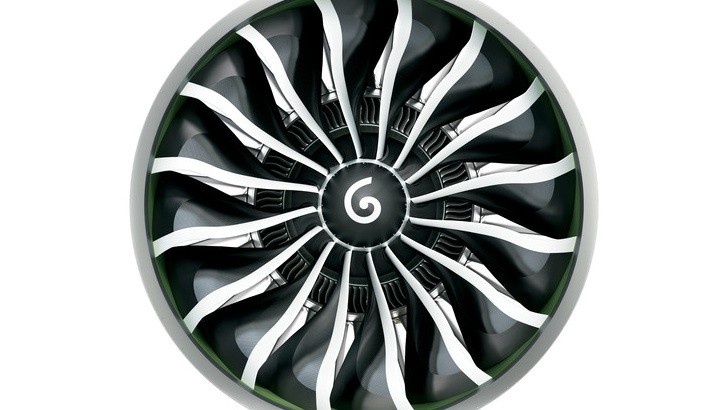The working principle of a jet engine seems a very easy process - you got two rotors with blades mounted on a shaft with a combustion chamber in between, hot gasses being expanded there to maintain the rotation movement.
Still, the gas-turbine engine requires a lot of additional systems to work properly and also special materials to resist the very high temperatures it can generate.
These materials also need to be light and General Electric just announced it started to use a next-generation carbon fiver composite for the fan blades that will fit the GE9X jet engines used by the next Boeing 777X passenger aircraft series.
Composite blades have been used before, but they have always needed to be thicker than metal ones, though they were also lighter and more durable. The company now takes advantage of the advancements in composite materials researching to create thinner blades that are just as strong as the current ones.
With thinner blades, the next GE9X engine will benefit from an enhanced airflow, offering a better overall performance than its predecessor. Not a bad thing for the company’s biggest turbine engine made, with the case at the front of the fan measuring 133 inches (338 cm) in diameter.
The next Boeing 777X will come in two versions - a 353-seater 777-8X and a bigger 407-seater 777-9X version. Several airline operators including Emirates, Ethiad Airways, Lufthansa and Qatar Airways have placed orders for the new generation of planes, summing up for over 280 units.
Engineers are currently fiddling with the aerodynamics, with first test flights expected to begin in 2017.
These materials also need to be light and General Electric just announced it started to use a next-generation carbon fiver composite for the fan blades that will fit the GE9X jet engines used by the next Boeing 777X passenger aircraft series.
Composite blades have been used before, but they have always needed to be thicker than metal ones, though they were also lighter and more durable. The company now takes advantage of the advancements in composite materials researching to create thinner blades that are just as strong as the current ones.
With thinner blades, the next GE9X engine will benefit from an enhanced airflow, offering a better overall performance than its predecessor. Not a bad thing for the company’s biggest turbine engine made, with the case at the front of the fan measuring 133 inches (338 cm) in diameter.
The next Boeing 777X will come in two versions - a 353-seater 777-8X and a bigger 407-seater 777-9X version. Several airline operators including Emirates, Ethiad Airways, Lufthansa and Qatar Airways have placed orders for the new generation of planes, summing up for over 280 units.
Engineers are currently fiddling with the aerodynamics, with first test flights expected to begin in 2017.
